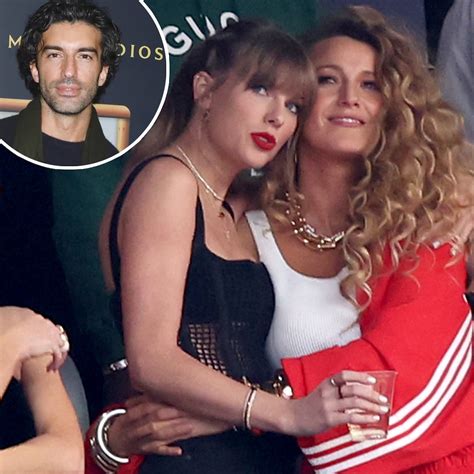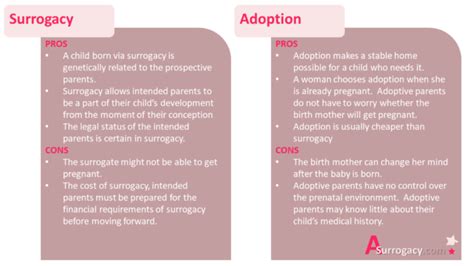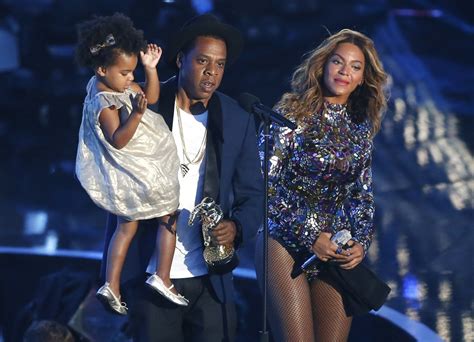
Taylor Swift seemingly expressed disapproval of Blake Lively’s public apology to Justin Baldoni following a perceived snub at a recent Tiffany & Co. event, as captured in a resurfaced TikTok video analyzing Swift’s facial expressions and body language. The video suggests Swift found Lively’s attempt to smooth things over as excessive, igniting debate among fans about the nuances of celebrity interactions and public image management.
A TikTok video, rapidly circulating across social media platforms, has fueled speculation that Taylor Swift subtly criticized Blake Lively’s reaction to an alleged social misstep involving actor and director Justin Baldoni. The incident, which occurred at Tiffany & Co.’s reopening event in New York City, saw Lively offering a public apology to Baldoni after seemingly overlooking him while greeting other attendees. The TikTok, dissecting Swift’s expressions and body language during Lively’s explanation of the situation, posits that Swift found Lively’s apology overly apologetic or “groveling,” sparking a flurry of online discussions and fan interpretations.
The controversy stems from a video Lively posted on her Instagram story, addressing an interaction at the Tiffany & Co. event. In the video, Lively humorously apologized to Baldoni, saying, “I feel like that Friends episode where Joey is like, ‘Could I BE wearing any more clothes?’ Anyway, Justin Baldoni, I’m so sorry I passed you, but I was clearly wearing blinders that night. That will not happen again.” This apology followed initial reports and social media chatter suggesting Lively had intentionally or unintentionally snubbed Baldoni at the event.
The TikTok video, created by user @skylar.p_ , analyzes Swift’s reaction while Lively is recounting the event and her subsequent apology. The video zooms in on Swift’s face, suggesting her micro-expressions convey a sense of disapproval or discomfort with Lively’s public display of contrition. The TikTok creator interprets Swift’s expressions as indicating she thought Lively’s apology was unnecessary or went too far. “Taylor’s face is me when someone over-apologizes,” the caption of the video reads. This interpretation has resonated with many viewers, leading to widespread discussion about the dynamics of celebrity friendships, the pressure to maintain a perfect public image, and the scrutiny celebrities face in the age of social media.
The situation highlights the intense public interest in the personal interactions of high-profile celebrities like Swift and Lively, whose friendship has been well-documented and celebrated by fans. Both women are known for their savvy use of social media and their carefully curated public personas. The incident also underscores the challenges celebrities face in navigating social situations under constant surveillance and the potential for even minor interactions to be blown out of proportion.
While neither Swift nor Lively has officially commented on the TikTok video or the interpretation of Swift’s expressions, the online conversation continues to grow, with fans offering a range of opinions on whether Lively’s apology was warranted and whether Swift’s reaction reflects genuine disapproval. Some fans defend Lively, arguing that her apology was a lighthearted attempt to address a potentially awkward situation and maintain a positive relationship with Baldoni. Others agree with the TikTok’s interpretation, suggesting that Lively’s apology came across as insincere or performative, and that Swift’s reaction reflects a more authentic assessment of the situation.
The Tiffany & Co. event itself was a star-studded affair, marking the reopening of the iconic jewelry brand’s flagship store in New York City. The event drew a crowd of A-list celebrities, including Swift, Lively, Baldoni, Gal Gadot, and numerous others. The reopening was a significant event for Tiffany & Co., showcasing the brand’s renewed commitment to luxury and innovation.
Justin Baldoni, known for his role in the television series “Jane the Virgin” and his directorial work on the film “Five Feet Apart,” has not publicly responded to Lively’s apology or the subsequent discussion surrounding it. Baldoni is generally perceived as a positive and grounded figure in Hollywood, known for his advocacy for mental health and his commitment to promoting positive masculinity.
The incident also raises broader questions about the nature of celebrity apologies and the expectations placed on public figures to address perceived wrongdoings. In an era of heightened social media scrutiny, celebrities are often pressured to issue apologies for even minor infractions, leading to a culture of performative remorse. Some critics argue that these apologies are often insincere and designed primarily to protect the celebrity’s public image, while others maintain that they are a necessary form of accountability.
The Swift-Lively-Baldoni situation is a microcosm of these broader debates, highlighting the complexities of celebrity relationships and the challenges of navigating public perception in the digital age. The intense scrutiny and speculation surrounding the incident underscore the public’s fascination with celebrity interactions and the desire to interpret even the smallest gestures as evidence of underlying tensions or hidden meanings. Ultimately, the incident serves as a reminder of the power of social media to amplify even minor events and to shape public perception of celebrities and their relationships.
The situation is further complicated by the long-standing friendship between Swift and Lively. The two have been close for years, frequently appearing together at public events and supporting each other’s careers. Swift has even referenced Lively and her children in her music, further cementing their close bond in the public eye. Any perceived tension between the two, even if based on speculation, is therefore likely to generate significant interest and discussion.
The TikTok video’s interpretation of Swift’s facial expressions is subjective, and it is impossible to know for certain what Swift was thinking or feeling at the time. However, the video’s widespread popularity and the ensuing discussion demonstrate the power of social media to create narratives and shape public opinion, even in the absence of definitive evidence. The incident serves as a cautionary tale about the potential for misinterpretation and the dangers of drawing conclusions based on limited information.
Furthermore, the incident highlights the evolving role of social media in celebrity culture. Platforms like TikTok and Instagram have given celebrities greater control over their public image, allowing them to connect directly with fans and share their perspectives. However, these platforms have also created new opportunities for scrutiny and criticism, as every post, comment, and expression is subject to intense analysis and interpretation. Celebrities must therefore navigate the social media landscape with caution, aware that even seemingly innocuous actions can be amplified and dissected by millions of viewers.
In conclusion, the Taylor Swift-Blake Lively-Justin Baldoni situation is a complex and multifaceted incident that reflects the broader dynamics of celebrity culture in the digital age. The incident highlights the intense public interest in celebrity relationships, the challenges of navigating social situations under constant surveillance, and the power of social media to shape public perception. While the true meaning of Swift’s expressions may never be known, the incident serves as a reminder of the complexities of celebrity life and the ever-present potential for misinterpretation and speculation.
The constant analysis of celebrity behavior, particularly through platforms like TikTok, shows a growing trend of “decoding” famous people. Every micro-expression, gesture, and interaction is meticulously examined for hidden meanings, often leading to speculative narratives that may or may not reflect reality. This trend is fueled by the public’s fascination with the lives of celebrities and the desire to feel connected to them.
The Swift-Lively-Baldoni incident also underscores the importance of context in interpreting social interactions. Without knowing the full context of the situation, it is difficult to accurately assess the meaning of Lively’s apology or Swift’s reaction. Factors such as their past relationship, their individual personalities, and the specific circumstances of the event could all have influenced their behavior.
Moreover, the incident raises questions about the ethics of analyzing and interpreting celebrities’ private moments. While celebrities have chosen to live their lives in the public eye, they are still entitled to a degree of privacy and respect. The constant scrutiny and speculation they face can be invasive and harmful, particularly when it is based on limited or incomplete information.
The situation is a reminder that celebrities are human beings with their own thoughts, feelings, and motivations. They are not immune to making mistakes or experiencing awkward social situations. The public’s tendency to view celebrities as larger-than-life figures can lead to unrealistic expectations and a lack of empathy.
The ongoing discussion surrounding the Swift-Lively-Baldoni incident highlights the need for a more nuanced and critical approach to celebrity culture. Instead of simply accepting speculative narratives and engaging in superficial analysis, it is important to consider the broader context, the potential for misinterpretation, and the ethical implications of scrutinizing celebrities’ private lives.
The media’s role in shaping public perception of celebrities is also a critical factor to consider. Media outlets often amplify speculative narratives and sensationalize minor incidents in order to generate clicks and views. This can contribute to a distorted and often negative portrayal of celebrities, further fueling public scrutiny and criticism.
A more responsible approach to celebrity journalism would involve focusing on factual reporting, providing context and analysis, and avoiding sensationalism and speculation. It would also involve respecting celebrities’ privacy and avoiding the dissemination of harmful or misleading information.
The Swift-Lively-Baldoni incident is just one example of the many challenges and complexities of celebrity life in the digital age. As social media continues to evolve and the public’s fascination with celebrities continues to grow, it is important to develop a more nuanced and ethical approach to analyzing and interpreting their lives.
The core of the issue also touches on the broader cultural phenomenon of public apologies. The pressure on public figures to apologize for perceived slights, missteps, or offenses has intensified in recent years, fueled by social media and a heightened awareness of social justice issues. While apologies can be a genuine expression of remorse and a means of repairing relationships, they can also be seen as performative acts designed to appease public opinion and protect one’s reputation. The effectiveness and sincerity of public apologies are often debated, with some arguing that they are a necessary form of accountability and others arguing that they are often empty gestures. Lively’s apology to Baldoni falls within this context, raising questions about its sincerity and its potential impact on her relationship with Baldoni and her public image.
The incident also raises questions about the role of social media in shaping celebrity friendships. In the past, celebrity friendships were largely private matters, with only occasional glimpses into their interactions through media coverage or public appearances. However, social media has changed the dynamic, allowing celebrities to share their friendships with the world and to interact with each other in public forums. This can create both opportunities and challenges, as celebrity friendships become subject to public scrutiny and speculation. The Swift-Lively friendship, which has been widely celebrated on social media, is now being viewed through a more critical lens in light of the alleged snub and Swift’s perceived reaction.
The situation can also be analyzed through the lens of social psychology. Social psychologists have long studied the dynamics of social interactions and the ways in which people interpret each other’s behavior. Concepts such as nonverbal communication, impression management, and attribution theory can help to explain the reactions of Swift, Lively, and the public to the alleged snub. Nonverbal communication, such as facial expressions and body language, plays a crucial role in social interactions, and people often rely on these cues to interpret others’ feelings and intentions. Impression management refers to the conscious or unconscious efforts people make to control the impressions others form of them. Attribution theory explains how people attribute causes to events and behaviors, and how these attributions can influence their judgments and reactions.
By applying these concepts to the Swift-Lively-Baldoni incident, it is possible to gain a deeper understanding of the psychological processes involved in the situation. For example, Swift’s perceived disapproval could be interpreted as a result of her making negative attributions about Lively’s apology, while Lively’s apology could be seen as an attempt to manage her impression and avoid negative judgment.
Ultimately, the Taylor Swift-Blake Lively-Justin Baldoni situation is a complex and intriguing incident that offers insights into celebrity culture, social media dynamics, and human psychology. While the true meaning of the incident may never be fully known, it provides a valuable opportunity to reflect on the ways in which we perceive and interpret the lives of celebrities and the role of social media in shaping our perceptions.
The incident also underscores the pressures faced by women in the entertainment industry. Female celebrities are often held to higher standards than their male counterparts, and they are more likely to be judged harshly for their appearance, behavior, and personal lives. The scrutiny that Swift and Lively face is a reflection of these gendered dynamics, and it highlights the challenges women face in navigating the public eye. The expectation that female celebrities must always be likable and agreeable can be particularly burdensome, and it can lead to situations where they feel compelled to apologize for even minor perceived infractions.
The discussion surrounding the incident also raises questions about the role of fans in shaping celebrity culture. Fans can play a powerful role in supporting and promoting their favorite celebrities, but they can also contribute to the pressure and scrutiny that celebrities face. The intense interest in Swift and Lively’s friendship is a testament to the power of fandom, but it also highlights the potential for fans to become overly invested in celebrities’ personal lives. The tendency to interpret every action and expression of a celebrity as evidence of hidden meanings can be harmful and invasive, and it can contribute to a culture of constant surveillance and judgment.
A more balanced approach to fandom would involve supporting celebrities’ work and celebrating their achievements, while also respecting their privacy and recognizing their humanity. It would involve avoiding the temptation to speculate about their personal lives and focusing instead on their creative contributions.
The Swift-Lively-Baldoni incident is a reminder that celebrities are not simply characters in a reality show. They are real people with their own thoughts, feelings, and experiences. It is important to approach their lives with empathy and respect, and to avoid the temptation to reduce them to simplistic narratives or stereotypes.
In addition to the social and psychological aspects, the incident also has implications for public relations and crisis management. Celebrities and their publicists must be prepared to respond to controversies and manage their public image in the face of negative publicity. Lively’s apology can be seen as an attempt to mitigate the potential damage to her reputation caused by the alleged snub. However, the effectiveness of her apology is debatable, as it has only fueled further discussion and speculation.
A more effective approach to crisis management might have involved addressing the issue privately with Baldoni and avoiding a public apology altogether. Alternatively, Lively could have offered a more general statement acknowledging the situation without explicitly apologizing or providing unnecessary details.
The incident highlights the importance of careful planning and strategic communication in managing celebrity controversies. Publicists must be able to anticipate potential problems and develop a proactive plan for responding to them. They must also be able to advise their clients on how to communicate effectively and avoid making statements that could exacerbate the situation.
The Taylor Swift-Blake Lively-Justin Baldoni incident is a valuable case study in celebrity culture, social media dynamics, human psychology, and public relations. It offers a range of insights into the complexities of celebrity life and the challenges of navigating the public eye. By analyzing the incident from multiple perspectives, it is possible to gain a deeper understanding of the forces that shape celebrity culture and the ways in which we perceive and interpret the lives of celebrities.
Frequently Asked Questions (FAQ)
-
What exactly happened at the Tiffany & Co. event that sparked this controversy?
Blake Lively was at the Tiffany & Co. flagship store reopening in New York City. Some perceived that she overlooked Justin Baldoni while greeting other attendees, leading to accusations of a snub. Lively later posted a humorous apology on her Instagram story addressing the situation.
-
What was Blake Lively’s apology and why is it considered controversial?
Lively posted on Instagram, jokingly apologizing to Baldoni for supposedly missing him at the event, referencing a “Friends” episode. The controversy stems from a TikTok video analyzing Taylor Swift’s facial expressions while Lively recounts this apology, suggesting Swift found it excessive or insincere. As Lively mentioned in her apology, “I feel like that Friends episode where Joey is like, ‘Could I BE wearing any more clothes?’ Anyway, Justin Baldoni, I’m so sorry I passed you, but I was clearly wearing blinders that night. That will not happen again.”
-
What does the TikTok video claim about Taylor Swift’s reaction?
The TikTok video, created by user @skylar.p_, analyzes Swift’s facial expressions during Lively’s apology, interpreting them as disapproval or discomfort. The TikTok creator suggests Swift thought Lively’s apology was unnecessary or went too far. The video caption reads, “Taylor’s face is me when someone over-apologizes.”
-
Have Taylor Swift or Blake Lively commented directly on the TikTok video or the interpretation of Swift’s expressions?
No, neither Taylor Swift nor Blake Lively has publicly commented on the TikTok video or the interpretation of Swift’s expressions. All information is based on the analysis presented in the TikTok and subsequent discussions on social media.
-
Why is this incident receiving so much attention?
The incident is receiving attention because it involves two high-profile celebrities, Taylor Swift and Blake Lively, whose friendship is well-known. The speculation about Swift’s reaction and the debate over the appropriateness of Lively’s apology highlight the intense public interest in celebrity interactions and the pressure celebrities face to maintain a perfect public image. This underscores the challenges celebrities face in navigating social situations under constant surveillance and the potential for even minor interactions to be blown out of proportion.








